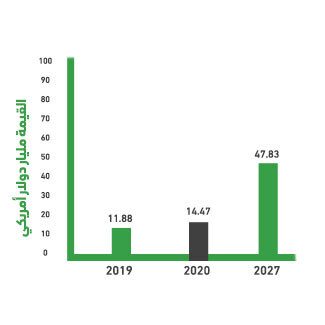The Modern Agricultural Equipment Project is a promising project that aims to support the agricultural sector by providing the latest technologies and tools that contribute to improving agricultural production efficiency. The project focuses on meeting the needs of farmers by offering a variety of equipment such as pumps, electric generators, tractors, plows, harvesting equipment, and modern irrigation systems such as sprinkler and drip irrigation. The role of the Modern Agricultural Equipment Project is not limited to selling equipment only; it also extends to providing technical advice to farmers, helping them choose the equipment best suited to their needs. The project also provides maintenance and repair services to ensure the continued efficient operation of equipment, in addition to making spare parts available at competitive prices and of high quality. The project relies on dealing with reliable suppliers to ensure product quality and is keen to provide appropriate guarantees and flexible financing solutions that facilitate farmers’ acquisition of the necessary tools. In line with the above, the project seeks to enhance agricultural productivity and achieve sustainable development.

A modern agricultural equipment project is an ideal choice for those seeking innovative solutions that enhance the efficiency and quality of agricultural operations. The project boasts a strategic location that is easily accessible, making it a preferred destination for farmers from various regions. The project is keen to provide comprehensive warranties on all equipment, which enhances customer confidence and satisfaction. This project places great emphasis on after-sales services, providing regular maintenance and original spare parts to ensure the continued operation of the equipment at peak efficiency. It includes a team of specialized technicians who provide technical support to customers at all stages of operation. It is worth noting that the project offers its services and products at competitive prices. These advantages make it a destination for those seeking to improve their agricultural production.



Excellent geographical location.
Warranties on all tools, equipment, and machinery sold.
Maintenance and spare parts services provided.
Diverse products and comprehensive services.
Highly qualified technicians.
Discounts and offers for regular customers.
Competitive prices.
Executive summary
Study project services/products
Market Size Analysis
Risk Assessment
Technical study
Financial study
Organizational and administrative study

The service sector represents an important part of the economy; indeed, it represents the largest portion of the global economy. The service sector is considered an industry and a science, focusing on the production of services rather than tangible goods, such as cars, aircraft, machinery, and equipment. The service sector is concerned with providing services to the public, including banking, communications, wholesale and retail trade, engineering, medical services, tourism, and non-profit economic activities such as customer service and government services that include development, national defense, and maintaining internal and external security.
The commercial sector includes the e-commerce sector and the wholesale and retail trade sector. The commercial sector in the Kingdom has witnessed numerous developments during the years of the Ninth Development Plan. The number of commercial registrations issued by the end of the fourth year (2013) of the Ninth Development Plan increased to more than 1.37 million, while the number of companies reached more than 86,000, and the number of licenses for installment sales, debt collection, and follow-up services reached 115,000. The recently released annual report issued by the Ministry of Commerce for the year 1435 AH revealed that the commercial sector contributed to the gross domestic product. The relative contribution of commercial activities to GDP grew in the wholesale and retail trade, restaurants and hotels sectors to GDP to 8.8%, and construction to 4.4%.

The number of internet users in the Kingdom increased from 19.6 million to 24 million between 2014 and 2016, according to a 2016 report by the Communications and Information Technology Commission. E-commerce is experiencing significant growth due to the availability of convenient payment methods, improved shipping methods, and changes in societal culture in recent years, driven by the availability of social media and the proliferation of smartphones, which have become an effective channel for completing many purchases. Data from the Saudi Payments Network (SPA) revealed that 2015 saw the recording of more than 1.1 billion financial transactions, with a total value exceeding 626.3 billion riyals, with an average monthly transaction volume exceeding 52 billion riyals. This was done through more than 17,000 ATMs and over 225,000 POS terminals spread across the Kingdom. The data added that last year saw steady growth in the number of POS terminals at payment outlets, increasing by 62% compared to the previous year.
The number of internet users worldwide reached 3.2 billion, with 157 million internet users in the Arab world. There are 11 million Facebook users in Saudi Arabia, including 3.2 million expatriates. There are 9 million Twitter users in Saudi Arabia, and 8.8 million Instagram users. Sixty percent of internet users in Saudi Arabia shop online, and 40% of online purchases are focused on mobile phones and accessories. 71% of shoppers in the Kingdom are young people, and 29% are women.